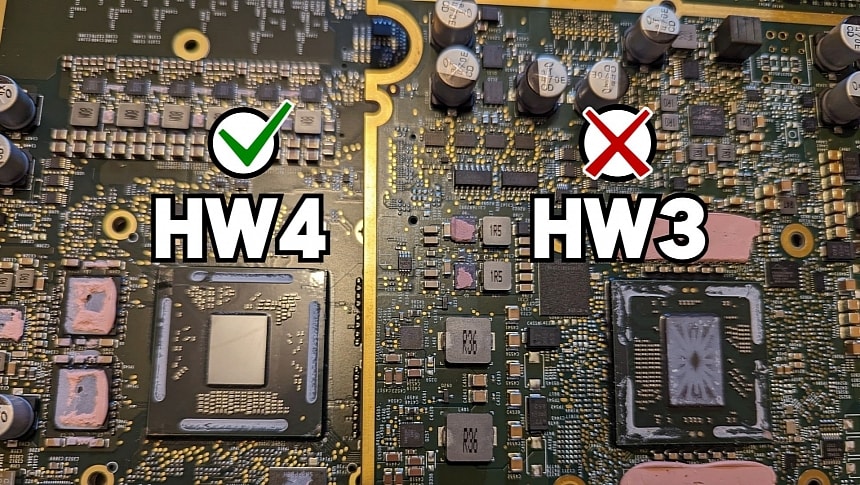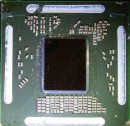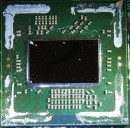Although Tesla claimed that all its cars are prepared for Full Self-Driving, vehicles with Hardware 3 Autopilot computer might have reached their limits. Elon Musk said that further FSD development would require an upgraded inference computer.
Tesla bet everything on autonomous driving as it pivoted its strategy towards artificial intelligence and robotaxis. Although the initial plans were to turn existing Tesla EVs into robotaxis with a software switch, this option has not been mentioned in the latest updates Tesla offered on vehicle autonomy. In a recent tweet, Elon Musk hints that this might not be possible at all, at least for older vehicles with Hardware 3 Autopilot computers.
After discussing the next-generation Autopilot computer, which will not be named Hardware 5 as previously rumored but AI5, Elon Musk offered an update that would sadden owners of older vehicles. Apparently, Tesla's next-generation AI model will see a five times increase in parameter count, which would be difficult to achieve with existing hardware in Tesla vehicles. Simply put, future iterations of FSD software would have to analyze a lot more aspects of every driving scenario. Given the computing power required, current Autopilot computers would run into bottlenecks.
The more parameters an AI model uses to analyze data, the more detailed and nuanced its perceptions and outputs can be. The downside is that a model with more parameters will require more computational resources during the inference phase. Think more memory and more computing power that older hardware might not be able to offer. This is only speculation at the moment, but it could mean the end of the road for Hardware 3 vehicles unless Tesla offers a Hardware 4 retrofit. After all, it offered a free HW3 retrofit to customers with HW2 and HW2.5 Autopilot computers who purchased the FSD package.
This is not much different from what happened in the past when Tesla ran into bottlenecks with Hardware 2. This was why it designed a custom chip, which allowed neural networks to run on the vehicle and process vast amounts of data. The Hardware 3 Autopilot computer could process images at 2,300 frames per second, while each of the two neural network arrays on a single FSD Chip could perform 36 trillion operations per second. Hardware 3 featured two FSD chips for redundancy, and Tesla claimed it was enough to reach full vehicle autonomy.
As the Hardware 4 Autopilot computer and sensor suite appeared in the refreshed Model S and Model X in 2021, Tesla reiterated that Hardware 3 was still enough for vehicle autonomy. During this year's shareholder meeting in June, Elon Musk insisted that Tesla is far from reaching Hardware 3 limits. After all, Tesla admitted that it doesn't use Hardware 4 at its full potential. Instead, it still uses HW4 to run HW3 in emulation mode.
For this, Tesla downsizes the images taken by the higher-resolution HW4 cameras to be processed using the same neural network models designed for Hardware 3. This promises to change as Tesla builds a new supercomputer at Giga Texas. Tesla intends to use it to train a Hardware 4-specific model for the first time, unlocking the full potential of HW4 vehicles. At that point, we should see a clear differentiation between older HW3 vehicles and those featuring newer hardware.
However, there's a reason why Tesla developed Hardware 4 and is now working on an AI5 inference computer. As more data needs to be processed, Tesla might have to admit that even a Hardware 4 computer won't be enough for full autonomy. Given its newly acquired name, the AI5 chips will be optimized for local (in-vehicle) processing of huge amounts of data. Tesla would not have done it if it didn't think it was necessary.
After discussing the next-generation Autopilot computer, which will not be named Hardware 5 as previously rumored but AI5, Elon Musk offered an update that would sadden owners of older vehicles. Apparently, Tesla's next-generation AI model will see a five times increase in parameter count, which would be difficult to achieve with existing hardware in Tesla vehicles. Simply put, future iterations of FSD software would have to analyze a lot more aspects of every driving scenario. Given the computing power required, current Autopilot computers would run into bottlenecks.
The more parameters an AI model uses to analyze data, the more detailed and nuanced its perceptions and outputs can be. The downside is that a model with more parameters will require more computational resources during the inference phase. Think more memory and more computing power that older hardware might not be able to offer. This is only speculation at the moment, but it could mean the end of the road for Hardware 3 vehicles unless Tesla offers a Hardware 4 retrofit. After all, it offered a free HW3 retrofit to customers with HW2 and HW2.5 Autopilot computers who purchased the FSD package.
This is not much different from what happened in the past when Tesla ran into bottlenecks with Hardware 2. This was why it designed a custom chip, which allowed neural networks to run on the vehicle and process vast amounts of data. The Hardware 3 Autopilot computer could process images at 2,300 frames per second, while each of the two neural network arrays on a single FSD Chip could perform 36 trillion operations per second. Hardware 3 featured two FSD chips for redundancy, and Tesla claimed it was enough to reach full vehicle autonomy.
As the Hardware 4 Autopilot computer and sensor suite appeared in the refreshed Model S and Model X in 2021, Tesla reiterated that Hardware 3 was still enough for vehicle autonomy. During this year's shareholder meeting in June, Elon Musk insisted that Tesla is far from reaching Hardware 3 limits. After all, Tesla admitted that it doesn't use Hardware 4 at its full potential. Instead, it still uses HW4 to run HW3 in emulation mode.
For this, Tesla downsizes the images taken by the higher-resolution HW4 cameras to be processed using the same neural network models designed for Hardware 3. This promises to change as Tesla builds a new supercomputer at Giga Texas. Tesla intends to use it to train a Hardware 4-specific model for the first time, unlocking the full potential of HW4 vehicles. At that point, we should see a clear differentiation between older HW3 vehicles and those featuring newer hardware.
However, there's a reason why Tesla developed Hardware 4 and is now working on an AI5 inference computer. As more data needs to be processed, Tesla might have to admit that even a Hardware 4 computer won't be enough for full autonomy. Given its newly acquired name, the AI5 chips will be optimized for local (in-vehicle) processing of huge amounts of data. Tesla would not have done it if it didn't think it was necessary.
Sorry for the delay. This release had far fewer interventions, but suffered in driving smoothness.
— Elon Musk (@elonmusk) July 1, 2024
Part of the issue was too much training on interventions and not enough on normal driving.
It’s like a doctor training too much on patients in the emergency room vs training on…
Yeah, so long as the information compression efficiency is held reasonably constant, a higher parameter count is a representation of how well it understands the nuances of reality
— Elon Musk (@elonmusk) July 1, 2024







